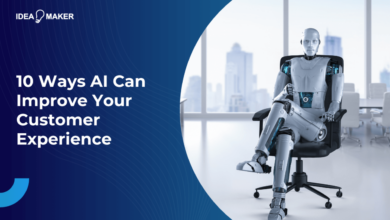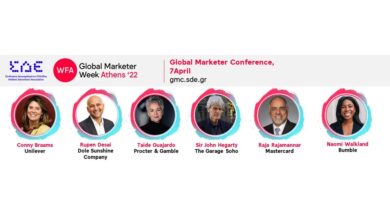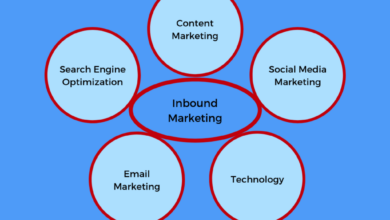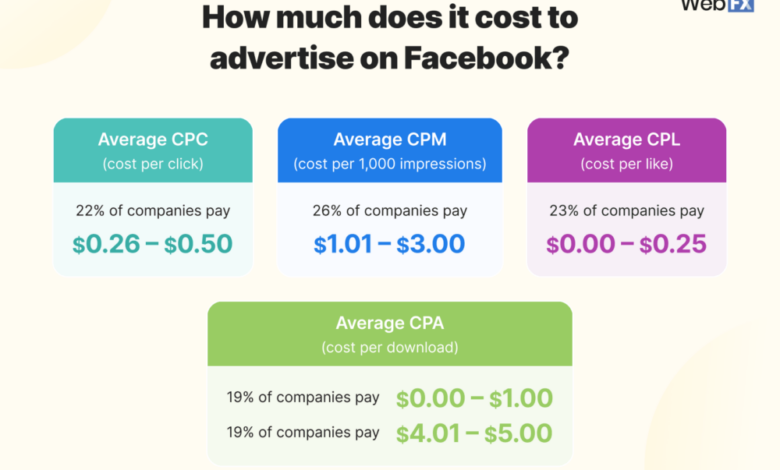
How Much Does Facebook Advertising Cost?
How much does Facebook advertising cost? This isn’t a simple question, as numerous factors influence the price. From your target audience’s demographics to the ad format you choose, everything plays a role in determining your ad spend. Understanding these factors is key to creating effective and cost-efficient Facebook ad campaigns.
This post will delve into the complexities of Facebook ad pricing, exploring different models, budget strategies, and real-world examples. We’ll cover everything from the various influencing factors to optimizing your campaigns for better results.
Factors Influencing Facebook Ad Costs

Facebook advertising costs aren’t a fixed amount; they fluctuate based on a multitude of factors. Understanding these variables is crucial for optimizing ad campaigns and achieving a favorable return on investment. This detailed exploration will cover the key determinants impacting Facebook ad prices.Understanding the factors influencing Facebook ad costs is essential for optimizing your campaigns and achieving the desired ROI.
These factors can be broadly categorized into audience characteristics, ad placement and targeting, creative quality, ad format, seasonality, competition, ad frequency, and more.
Target Audience Demographics and Ad Costs
Target audience demographics play a significant role in determining Facebook ad costs. More specific and detailed targeting often leads to higher costs. For example, a highly niche audience focused on a specific hobby or interest may command a premium. This is because advertisers targeting a smaller, more specific audience are competing for the same impressions, resulting in higher bidding costs.
Facebook’s algorithm dynamically adjusts bids based on the estimated effectiveness of reaching that specific audience segment. Highly segmented targeting, including detailed interests, behaviors, and demographics, can increase ad costs due to the scarcity of impressions within those segments.
Ad Placement and Targeting Options and CPC
Ad placement and targeting options directly influence the cost per click (CPC). Ads displayed in high-traffic areas or on pages with high engagement potential will typically have higher CPCs. Placement on prominent news feeds, within specific groups, or in high-performing ad placements often results in higher costs. Targeted ads are also more likely to have higher CPCs compared to broader targeting, as they are more likely to attract the desired user base.
This often correlates with the overall value and potential ROI for the advertiser.
Ad Creative Quality and Ad Spend
Ad creative quality significantly impacts ad spend. High-quality, engaging visuals and compelling copy tend to attract more clicks and conversions, often leading to lower CPCs. Visually appealing and well-structured ads tend to perform better, resulting in more user engagement and lower costs per click. This means advertisers can potentially achieve higher ROI with improved creative elements. The opposite is also true; poorly designed or unappealing ads may be less effective, leading to higher costs per click.
Comparison of Ad Formats and Costs
Different ad formats have varying costs. Video ads, often considered more engaging, typically have higher costs compared to static image ads. Carousel ads, with multiple images or videos, can also have higher CPCs due to their more complex design and potential for higher user engagement. The level of engagement and interactivity inherent in each format influences the price.
Figuring out Facebook ad costs can be tricky, but understanding the factors involved is key. Different targeting options, ad formats, and bidding strategies all play a role in determining the final price. To visualize these factors effectively, consider creating your own embeddable infographic code create embeddable infographic code. This way, you can clearly display the range of potential costs and make informed decisions about your Facebook ad campaigns.
Ultimately, knowing how much Facebook advertising costs comes down to careful planning and understanding your target audience.
Cost comparisons can vary depending on the specific campaign goals and targeting strategies.
Seasonality of Ad Campaigns and Pricing
Seasonality significantly affects ad pricing. During peak seasons or special events, competition increases, leading to higher ad costs. Demand for specific products or services can also influence seasonality effects. This phenomenon is common in e-commerce, where sales spikes during holiday seasons result in increased bidding for ad placements. Understanding and planning for these seasonal variations is critical for effective ad campaign management.
Competition and Ad Costs, How much does facebook advertising cost
Competition for ad space directly impacts ad costs. When multiple advertisers target the same audience segment, bidding wars can arise, driving up costs. The level of competition in a particular market segment or niche greatly influences pricing. Competition often necessitates higher bids to secure ad placements.
Ad Frequency and Pricing
Ad frequency, or how often users see the same ad, plays a role in pricing. High ad frequency can lead to ad fatigue, reducing the effectiveness of the ad and potentially increasing costs. This is because users may become less responsive to repetitive ads. A balanced approach is crucial for optimal ad frequency, which should align with the campaign goals.
Correlation Between Ad Specifications and Costs (Illustrative Table)
| Ad Specification | Target Audience | Ad Format | Ad Placement | Estimated Cost (CPC) |
|---|---|---|---|---|
| High-value product, narrow targeting | High-income professionals | Video Carousel | News Feed | $2.50-$5.00 |
| General product, broad targeting | Millennials | Image | Right-hand column | $0.50-$1.50 |
| Specific service, detailed targeting | Local businesses | Lead generation | Groups | $1.00-$2.00 |
Note: This table provides illustrative examples; actual costs may vary significantly depending on various factors.
Understanding Facebook Ad Pricing Models
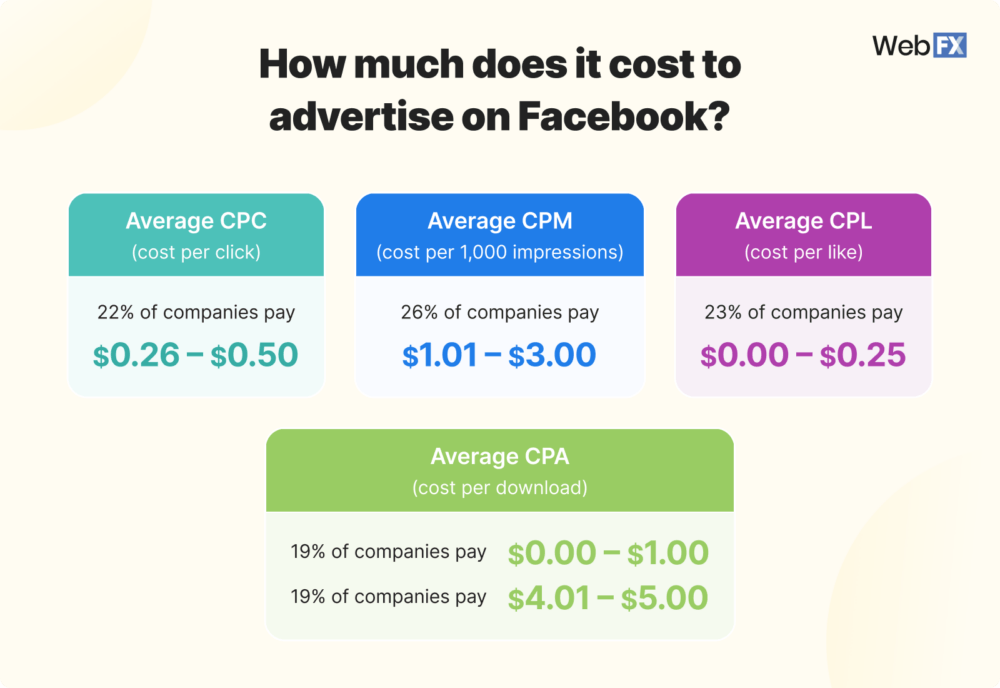
Navigating the world of Facebook advertising can feel like a treasure hunt, especially when it comes to costs. Knowing the different pricing models is crucial to maximizing your return on investment (ROI) and getting the most bang for your buck. This section delves into the various Facebook ad pricing models, examining their strengths and weaknesses, and providing real-world examples to help you choose the best approach for your campaigns.Understanding these models empowers you to set realistic budgets and expectations, ensuring your campaigns are not only effective but also financially sound.
Figuring out how much Facebook advertising costs can be tricky, right? It’s often a wild ride, fluctuating based on your audience and campaign goals. Instead of constantly battling the Facebook ad spend enigma, maybe you should consider exploring the potential of Dialogflow, which is revolutionizing marketing strategies. This AI-powered platform allows for more targeted, personalized interactions with your audience, ultimately reducing costs in the long run, and potentially leading to a higher ROI than traditional Facebook advertising.
Check out why Dialogflow is the future of marketing to see how it works, and how it might actually be cheaper than Facebook ads in the long run. Ultimately, a deeper understanding of the advantages of Dialogflow could lead to more cost-effective marketing campaigns than Facebook ads.
The goal is to align your chosen pricing model with your specific campaign objectives and target audience.
Facebook Ad Pricing Models
Facebook utilizes several pricing models to determine the cost of your ads. These models are designed to suit different advertising goals and strategies. Understanding these models is essential for making informed decisions about your ad spend.
- Cost Per Click (CPC): This model charges you every time a user clicks on your ad. It’s ideal when your primary goal is driving traffic to a specific landing page, such as making a purchase or filling out a form. The cost per click is determined by factors like the ad’s relevance to the audience, competition, and the quality of your ad.
- Cost Per Mille (CPM): Also known as cost per thousand impressions, this model charges you for every 1,000 times your ad is displayed. This model is most suitable when your primary objective is brand awareness or reaching a large audience. Factors influencing the CPM include audience targeting, ad creative quality, and competition. For example, reaching a broader audience with a well-crafted ad that resonates with the target demographic might result in a lower CPM compared to a campaign targeting a niche audience with a less engaging ad.
- Cost Per Engagement (CPE): This model charges you for actions like likes, comments, shares, or video views. It’s a good option when your goal is to increase social interaction around your content or boost engagement with your brand. The cost per engagement depends on the level of interaction your ad elicits, the ad’s quality, and the competition.
Key Metrics in Determining Ad Pricing
Various metrics influence ad pricing within each model. Understanding these metrics is critical for effective budget management.
- Quality Score (CPC): Facebook’s Quality Score assesses the relevance and quality of your ad and landing page. A higher Quality Score generally leads to lower CPCs. Factors like click-through rates (CTR) and landing page experience contribute to the score.
- Reach and Impressions (CPM): These metrics determine how many users see your ad (impressions) and the potential size of your audience (reach). A higher reach often translates to a higher CPM. For example, a campaign targeting a larger audience demographic with high visibility could result in a higher CPM.
- Engagement Rate (CPE): This metric measures the level of interaction users have with your ad, such as likes, comments, and shares. A higher engagement rate often results in a lower CPE.
Ad Bidding Strategies and Cost
Ad bidding strategies play a significant role in the final cost of your Facebook ads. The strategy you choose directly affects the amount you pay per click, impression, or engagement.
Figuring out Facebook ad costs can be tricky, but it’s a crucial factor in any marketing strategy. To maximize your reach and engagement, consider how to schedule Instagram posts effectively, like in this helpful guide how to schedule Instagram posts and why you should. Ultimately, understanding your Instagram presence alongside your Facebook ad budget will help you make the most of your marketing spend.
- Automatic Bidding: Facebook’s algorithm automatically adjusts bids based on real-time data, ensuring your ads are shown to the most relevant audience. This strategy can be effective for maximizing reach or engagement within a set budget.
- Manual Bidding: You set the maximum bid amount for each ad, offering more control over your spending. This approach is best suited for campaigns with specific cost targets or when you want to fine-tune your targeting strategy. For instance, a business might choose manual bidding to precisely target users who are actively searching for a specific product or service.
Comparison of Pricing Models
| Pricing Model | Goal | Cost Trigger | Suitability | Advantages | Disadvantages |
|---|---|---|---|---|---|
| CPC | Driving clicks to a landing page | User clicks | E-commerce, lead generation | Precise control over cost, measurable results | Potentially higher cost if clicks are infrequent |
| CPM | Brand awareness, reaching a large audience | 1,000 impressions | Brand building, awareness campaigns | Cost-effective for large-scale reach | Less direct measurement of conversions |
| CPE | Boosting social engagement | Engagement actions (likes, comments) | Social media campaigns, increasing brand interaction | Focuses on user interaction | Less direct impact on sales |
Bidding Strategy Cost Comparison (Example)
| Bidding Strategy | Estimated Cost per 1,000 Impressions (CPM) |
|---|---|
| Automatic | $10 – $25 |
| Manual (Conservative) | $15 – $30 |
| Manual (Aggressive) | $25 – $50 |
Budgeting and Optimizing Facebook Ad Campaigns
Mastering Facebook ad campaigns involves more than just creating compelling ads. A well-defined budget, coupled with strategic optimization, is crucial for maximizing ROI. This section delves into effective budgeting strategies, campaign optimization techniques, and performance tracking to help you get the most out of your Facebook ad spend.Understanding your target audience and campaign goals is fundamental to setting a realistic budget.
A well-researched approach will help you avoid overspending or under-budgeting. Furthermore, optimizing your campaign for performance is key to achieving a positive return on investment.
Setting Realistic Ad Budgets
Defining a realistic budget is the cornerstone of a successful Facebook ad campaign. It’s not about throwing money at the problem; it’s about strategically allocating resources to achieve specific goals. Consider your campaign objectives, target audience size, and anticipated conversion rates when determining your budget. Begin by setting a maximum budget and gradually adjust it based on performance data.
Experiment with different budget allocations to find the sweet spot for your specific needs. For example, a smaller budget might be suitable for awareness campaigns, while a larger budget might be necessary for driving significant sales conversions.
Optimizing Ad Campaigns to Reduce Costs
Optimizing campaigns is a continuous process, not a one-time event. A key element is refining your targeting criteria. By narrowing down your audience segments to precisely match your ideal customer profile, you reduce wasted ad spend on irrelevant users. Furthermore, A/B testing different ad creatives, ad copy, and landing pages helps identify what resonates most with your audience, maximizing engagement and conversion rates.
Consider using dynamic creative optimization to automatically adjust ads based on real-time data and performance.
Tracking and Analyzing Ad Performance
Regular tracking and analysis are vital to understanding the effectiveness of your campaigns. Facebook Ads Manager provides comprehensive reporting tools. Use these to monitor key metrics such as click-through rates (CTR), cost per click (CPC), conversion rates, and return on ad spend (ROAS). By meticulously tracking these metrics, you can identify which ads, audiences, and placements are performing best and which require adjustment.
Regularly review your campaign performance data to understand trends and patterns.
Identifying and Eliminating Ineffective Ad Spending
Ineffective ad spending is a common challenge in online advertising. Identifying the root causes is essential for optimization. A thorough analysis of campaign performance metrics can highlight underperforming ads or audiences. Analyze the data and look for areas where your ad spend is not generating the desired results. If a particular ad set is underperforming, consider pausing or modifying it.
Regularly evaluate your campaign’s performance to ensure your budget is allocated effectively and that you’re not losing money on ineffective strategies.
Budget Allocation Strategies for Different Campaign Objectives
| Campaign Objective | Budget Allocation Strategy |
|---|---|
| Brand Awareness | Allocate a portion of your budget to reach a broader audience, focusing on impressions and reach. |
| Lead Generation | Allocate a portion of your budget to ads that target specific demographics and interests, focusing on conversions. |
| Website Traffic | Allocate a portion of your budget to ads that drive traffic to your website, focusing on clicks and website visits. |
| Sales | Allocate a significant portion of your budget to ads that target high-value customers and drive direct sales conversions. |
Steps to Optimize Ad Campaigns for Reduced Costs
| Step | Action |
|---|---|
| 1 | Define Clear Objectives |
| 2 | Refine Targeting |
| 3 | A/B Test Ad Creatives |
| 4 | Monitor and Analyze Performance |
| 5 | Optimize Bidding Strategies |
| 6 | Refine Landing Pages |
| 7 | Review and Adjust |
Case Studies and Examples of Facebook Ad Costs
Facebook ad costs are highly variable, influenced by numerous factors. Understanding these variations is crucial for setting realistic budgets and achieving optimal campaign performance. This section delves into real-world examples, highlighting how different industries, campaign objectives, and geographic locations impact advertising expenditure.
Real-World Examples of Facebook Ad Campaign Costs
Different businesses and industries face varying costs for Facebook advertising. A small e-commerce store focusing on local products might spend a few hundred dollars per month, while a large multinational corporation promoting a new software product could invest tens of thousands. The key is to align the budget with the campaign’s goals and target audience.
Impact of Industry on Ad Costs
The industry a business operates in significantly affects Facebook ad costs. High-demand niches, like luxury goods or high-tech products, often command higher ad prices. This is due to increased competition and the willingness of businesses in these sectors to pay more for highly targeted and qualified leads. For instance, a luxury car brand might pay more per click than a local bakery promoting a new seasonal offering.
Influence of Campaign Objectives on Budget
Campaign objectives play a pivotal role in shaping the overall budget. A campaign aimed at brand awareness, with a focus on reaching a broad audience, might have a lower cost-per-impression than a campaign seeking conversions, requiring highly targeted ads and potential higher bids. Businesses focused on generating sales through specific product promotions will likely see higher ad spend to acquire customers.
Geographic Variations in Ad Costs
The location of the target audience also impacts ad costs. More competitive advertising markets, like the United States or Western Europe, often have higher costs compared to emerging markets. A business targeting users in a region with a higher concentration of potential customers might need to pay more for ad placement and visibility.
Table Summarizing Case Studies
| Campaign | Industry | Budget (USD) | Objective | Outcome (e.g., Leads Generated, Sales) |
|---|---|---|---|---|
| “Autumn Fashion Collection” | Fashion Retail | $5,000 | Brand awareness, website traffic | Increased website traffic by 20%, 150+ inquiries |
| “New Smartphone Launch” | Technology | $20,000 | Conversions, sales | 1,000+ sales in the first week |
| “Local Restaurant Promotions” | Food Service | $300 | Increased foot traffic, local customers | 200+ customers visited the restaurant |
Reducing Ad Costs Through Targeting Improvements
Effective targeting is paramount for optimizing ad spend. Broad targeting often results in wasted ad spend, as ads reach users who are not interested or likely to convert. Focusing on specific demographics, interests, and behaviors can significantly reduce costs. For example, instead of targeting everyone interested in “fashion,” a clothing retailer could target users interested in specific styles, price ranges, or past purchase history, leading to higher conversion rates and lower ad costs.
Refining targeting is a continuous process, involving iterative adjustments based on performance data.
Correlation Between Ad Performance Metrics and Budget Optimization
Analyzing metrics like click-through rate (CTR), cost-per-click (CPC), and conversion rate is essential for optimizing budget allocation. High CTRs and conversion rates indicate effective targeting and ad copy, suggesting potential for increased budget allocation to those campaigns. Conversely, low performance metrics indicate areas for improvement in targeting, ad creative, or bidding strategies, potentially justifying a reduction in spending. For example, a campaign with a low conversion rate and high CPC might be adjusted to narrow targeting or refine the ad message, leading to a better return on ad spend.
Resources for Determining Facebook Ad Costs: How Much Does Facebook Advertising Cost
Knowing how much Facebook ads will cost is crucial for effective budgeting and campaign optimization. It’s not a one-size-fits-all answer, but understanding the various resources available can help you estimate costs accurately. These resources range from simple calculators to complex platforms offering in-depth analyses.A significant factor in determining Facebook ad costs is understanding the nuances of the platform’s pricing models.
These models are not static and can change based on various factors, such as audience targeting, ad creative, and campaign duration. Therefore, a robust research strategy is key to making informed decisions.
Helpful Resources for Researching Facebook Ad Pricing
Knowing where to look for accurate information on Facebook ad pricing is essential. Different resources cater to different needs and levels of expertise. From basic calculators to advanced analytics tools, these resources provide invaluable insights.
- Facebook Ads Manager: Facebook’s own Ads Manager is a primary resource. It provides real-time estimates based on your chosen targeting criteria. Understanding how to use the built-in tools is vital. This tool is particularly useful for immediate cost estimations before launching a campaign.
- Third-Party Ad Cost Calculators: Several websites offer free ad cost calculators that take into account variables like audience demographics, campaign goals, and bidding strategies. These tools are excellent starting points for initial cost assessments. However, relying solely on these calculators might not provide the depth of analysis required for sophisticated campaigns.
- Marketing Analytics Platforms: More comprehensive tools like HubSpot or SEMrush offer insights into competitor ad spending and industry benchmarks. These platforms often provide a broader perspective, but might require a paid subscription for access to detailed data.
- Industry Blogs and Publications: Staying updated on industry trends and news through relevant blogs and publications can help you understand the dynamic nature of Facebook ad pricing. These resources offer valuable context and examples, and are essential for staying abreast of pricing fluctuations.
- Consultants and Agencies: For complex campaigns or those needing detailed analysis, consulting with marketing agencies or experienced consultants is beneficial. They provide expert insights and strategies to optimize campaign performance and cost-effectiveness. Their services typically come at a cost.
Factors to Consider When Choosing a Resource
Selecting the right resource depends on your specific needs and level of expertise. Factors like budget, campaign complexity, and desired level of analysis are crucial considerations.
- Budget: Free resources are excellent starting points, but more sophisticated tools might require a subscription fee. Balancing the cost of the resource against the potential return on investment is important.
- Campaign Complexity: Simple campaigns can be effectively managed with basic calculators. However, complex campaigns requiring detailed audience segmentation and sophisticated bidding strategies might benefit from more advanced analytics platforms.
- Desired Level of Analysis: Basic calculators provide estimates, while marketing analytics platforms offer more in-depth insights into competitor data and market trends. Understanding your specific research needs will guide your selection.
Examples of Specific Resources
Different resources are tailored for various needs. A simple calculator is suitable for initial estimations, while sophisticated tools are better for detailed analyses.
- Basic Research: Free online calculators or Facebook’s Ads Manager can be used for preliminary estimates.
- Advanced Research: Marketing analytics platforms provide insights into competitor data and industry benchmarks.
Table of Resources for Determining Facebook Ad Costs
| Resource | Specific Function | Target Audience |
|---|---|---|
| Facebook Ads Manager | Provides real-time estimates, campaign management tools | Businesses of all sizes, individuals running campaigns |
| Third-Party Ad Cost Calculators | Quick estimations based on input parameters | Businesses new to Facebook Ads, quick cost assessments |
| Marketing Analytics Platforms (e.g., HubSpot, SEMrush) | Competitor analysis, industry benchmarks, detailed reporting | Businesses needing comprehensive insights, advanced campaign optimization |
| Industry Blogs and Publications | Staying updated on trends, understanding pricing dynamics | Marketers, advertisers, anyone interested in Facebook Ads |
| Consultants/Agencies | Expert advice, tailored strategies, advanced optimization | Businesses with complex campaigns, needing specialized guidance |
Final Thoughts
In conclusion, determining the cost of Facebook advertising requires a nuanced understanding of various factors, including audience targeting, ad formats, and pricing models. By understanding these elements, you can create a more informed budget strategy and optimize your campaigns for maximum ROI. Remember to constantly monitor your ad performance and adapt your strategies accordingly for cost-effective results. This exploration of Facebook ad costs will equip you with the knowledge to navigate the platform effectively.
